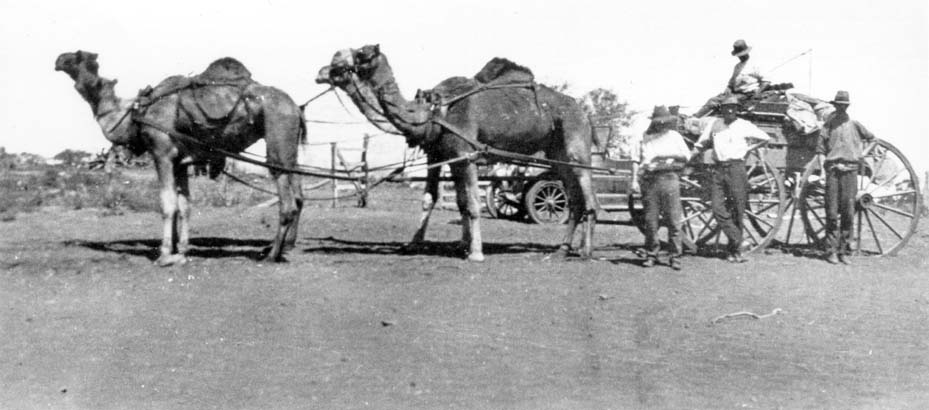|
Bullocks, Camels, and Horses
The British settlers who came to the Swan River Colony in the nineteenth century brought with them horses and bullocks for transporting people and goods.
These forms of transport were still in use at the turn of the century and remained so, in rural parts of Western Australia at least, throughout a good part of the first half of the twentieth century.
Bullock teams were particularly important to the development of Western Australia. While they were slower than horses or donkeys, they were easier to handle in rough bush
country.
Bullocks could work in soft and loose sand, and were more manoeuverable than
teams of horses. They would plod steadily through all types of terrain to cart loads of wool and timber under any circumstance throughout the State. However, with the
construction of tracks and roads they were replaced by horses and donkeys, and then by forms of motor transport that became increasingly powerful and reliable as the twentieth century progressed.
As the colony expanded into more arid areas in the late nineteenth century camel teams, handled by Afghani cameleers, became essential in supplying the booming
gold mining industry.
|
|








